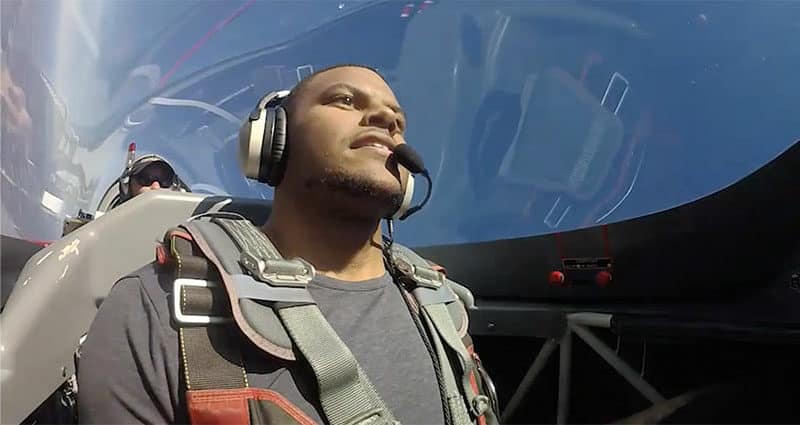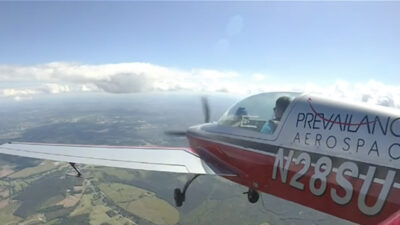Take the Stairs!

I am often asked to provide Upset Prevention and Recovery Training (UPRT) in one day. My response is that I can do it, but it will not be effective unless dynamic maneuvering is a routine part of each pilot’s flying life.
It is human nature to seek the “easy” button and attempt to expedite the path to understanding and mastering skills. Unfortunately, this streamlined approach is far less effective than its more methodical, and typically longer, counterpart.
The 4 Stages of Skill Development
An Olympic strength and conditioning coach wrote an article about the four stages of skill development, and I believe they align with professional pilot training (Christian Bosse, 2017). There are no shortcuts or “elevators” to success. Skill development requires progression through each stage.
As Bosse wrote, you must “take the stairs” from one phase to the next:
- Unconsciously Incompetent or Unconsciously Unskilled
- Consciously Incompetent or Consciously Unskilled
- Consciously Competent or Consciously Skilled
- Unconsciously Competent or Unconsciously Skilled
Believe it or not, most pilots are in stage one or two and unwilling to move beyond it. Why, you ask? Well, that requires further explanation.
Stage 1
As noted above, the first stage of skill development is Unconsciously Incompetent or Unconsciously Unskilled. This means that you do not know that you do not know. In naval aviation, it is referred to as the unknown unknown. This is often the professional pilot who is an incredible systems manager but rarely skilled beyond the Federal Aviation Administration (FAA) Airman Certification Standards (ACS) requirements for dynamic maneuvering during flight training. This individual is confident in their ability and the capability of their aircraft not to roll beyond 60 degrees angle of bank (AOB), let alone to be inverted. Therefore, that area of the flight envelope is avoided completely.
Fortunately, the elevated focus by the FAA and National Transportation Safety Board (NTSB) on Upset and Loss of Control – Inflight (LOC-I) training frequently causes these pilots to realize that dynamic maneuvering is not part of their routine or comfort zone, which helps move them to the second stage.
Stage 2
What does Consciously Incompetent or Consciously Unskilled mean? Stage two is essentially that you know what you do not know, or as it is often referred to in the military, the known unknown. This is where most of my instructor experience lies, with pilots who understand there is more of each aircraft’s operating envelope available and it requires practiced exploration. The hard part is getting most Type A pilots to admit this and obtain the necessary training.
Understanding the fundamentals in stage two is essential, especially as they apply to upsets, how to avoid them and, most importantly, how to recover from them. Countering LOC-I requires a new skill set, and training from a good instructor is critical at this stage.
Each confident, yet trepidatious, pilot requires an instructor with robust experience and a thorough knowledge of aerodynamics and dynamic maneuvering to further complement their already-strong foundation. Several hours of in-depth discussion and multiple flights outside of the pilot’s normal flight parameters are required to get past this stage.
An example of one pilot taking the stairs and the benefit of putting the work in for skills development.
Stage 3
Once you are in the I know that I know or (Consciously Competent or Consciously Skilled) stage, that level of mastery can only be maintained through practice and the pursuit of continued learning. This includes reading material dedicated to the subject matter written by experts in the field, training aids published by industry leaders and advisory circulars focused on upsets, stalls and LOC-I. Most importantly, continued sharpening of this new skill is paramount.
Real-world scenarios must be practiced, both as an individual and as a crew member. For the pilot in command, it is crucial to develop the muscle memory of disconnecting the autopilot/auto throttle systems, unloading the wing, managing the energy of the aircraft, and rolling, pushing, pulling or all of the above appropriately to recover from an upset within the limits of the airframe.
As a pilot monitoring, this is the chance to practice determining what information should be passed, when it should be shared and with what level of urgency and inflection. Continuing to hone these skills is vital to flight preparedness. Plus, flying in different aircraft and in new, dynamic ways can rekindle one’s love of aviation.
Stage 4
The final stage, Unconsciously Competent or Unconsciously Skilled, means you will react appropriately during an upset or LOC-I situation without having to consciously think about it. Even when startled by an unexpected event, your first reaction is the right one.
Every pilot and aviation professional should strive for Stage 4 UPRT skill development. Once they achieve it, they must work hard to sustain it, whether at work or in their personal flying.
Resources
Christian Bosse (2017, October 9) How do you get better at anything? Take the stairs! LinkedIn. https://www.linkedin.com/pulse/how-do-you-get-better-anyting-take-stairs-christian-bosse/

Prevailance Aerospace is a UPRT provider that has been working with corporate, government, and general aviation pilots to improve safety in the aviation industry. Prevailance Aerospace uses Extra 300 Series Aircraft for training and our pilots are experienced aviation professionals from various military and general aviation backgrounds. We know that successful aviation endeavors are accomplished through an uncompromising commitment to safety, impeccable professionalism, tremendous attention to detail, and constant improvement.
http://prevailanceaerospace.com
© 2024 Prevailance Aerospace. All Rights Reserved.
Next ArticleRelated Posts

Three Considerations That Set Pilots Up for Success
Constantly reviewing aviation accidents and incidents is challenging. As an instructor, it is not only the injuries and fatalities that make it hard, but the sheer magnitude of avoidable aspects of each incident. These safety reports prove that every Pilot in Command (PIC) is accountable for what transpires.

Understanding the Challenge of Turbulence-Related Injuries in Business Aviation
The challenge of managing air turbulence in business and private aviation is becoming increasingly evident due to the growing number of turbulence-related incidents affecting aircraft operators across the industry.

